Fluticasone furoate with umeclidinium and vilanterol for severe asthma: 24 month predicted versus actual analysis
Page last updated: 28 October 2025
Drug utilisation sub-committee (DUSC)
April 2025
Abstract
Purpose
To review the utilisation of single inhaler triple therapies for severe asthma to consider if reversion to Authority Required (telephone /online) may be required if use beyond the intent of the restriction is evident.
The single inhaler therapies of interest are:
- Trelegy Ellipta - Fluticasone furoate + umeclidinium + vilanterol henceforth referred to as FF/VI/UMEC
- Trimbow – beclomethasone + formoterol + glycopyrronium henceforth referred to as BEC/FOR/GLY
- Enerzair Breezhaler – mometasone + indacaterol + glycopyrronium henceforth referred to as MF/IND/GLY
Other inhaler therapies referred to in the report are as follows:
- Inhaled corticosteroids (ICS)
- Short/long-acting muscarinic antagonists (SAMA/LAMA)
- Short/long-acting beta agonists (SABA/LABA)
Date of listing on the Pharmaceutical Benefits Scheme (PBS)
MF/IND/GLY was first listed on the PBS for severe asthma on 1st April 2021.
FF/VI/UMEC was first listed on the PBS for severe asthma on 1st April 2022.
BEC/FOR/GLY was first listed on the PBS for severe asthma on 1st January 2023.
Data Source / methodology
PBS dispensing data was extracted from the PBS data maintained by the Department of Health and Aged Care, processed by Services Australia.
Key Findings
- In year 1 of listing there were 24,910 prevalent patients utilising FF/VI/UMEC for severe asthma followed by 45,108 and 53,224 in subsequent listing years noting that the third listing year is incomplete.
- In year 1 of listing there were 97,287 prescriptions dispensed for FF/VI/UMEC at a cost to government of $7.7 million increasing to $19.6 million and $21.6 in subsequent listing years noting that the third listing year is incomplete.
- The number of prescriptions and cost to government for FF/VI/UMEC was different to predicted in the first and second year of listing. Current utilisation in the third year of listing suggests a similar percentage change to the second year.
- The number of new patients initiating single inhaler triple therapies for severe asthma is greater than the number of patients who initiated treatment with tiotropium (item code 11043F) which was used as the basis for a market share approach in each of the PBAC submissions.
- The number of patients initiating on to a single inhaler triple therapy that had a PBS treatment history that was identified as potentially outside of the restriction for severe asthma was 14,625 or 14% of the initial patient numbers up to 30th November 2024.
- 29,090 patients or 28% of patients initiating a single inhaler triple therapy for severe asthma had evidence of more than six COPD restricted prescriptions in their PBS history.
- The total cost to government of inhaler therapies (excluding nebulised products) has remained steady at approximately $600 million per year since 2018. ICS/LABA preparations reduced by $6.5 million dollars per year to $168 million in 2024 from $207 million in 2018. LAMA products reduced by $22.5 million dollars per year from $250 million to $115 million in 2024. SABA products increased by $5.5 million per year up to $110 million in 2024. ICS/LABA/LAMA products had grown by $18.1 million growth rate per year up to $116 million in 2024.
- The proportion of the ICS/LABA market attributable to COPD prescriptions has remained steady at approximately 15% per year with $25 million in 2024 while the remaining 85% was from asthma prescriptions at $143 million in 2024. With the listing of ICS/LABA/LAMA for severe asthma, the proportion of cost attributable to COPD has been reducing. In 2024 the cost attributable to COPD prescriptions was 65% of the total $116 million at $75.4 million and for asthma this was 35% of the total at $40.6 million.
Full Report




